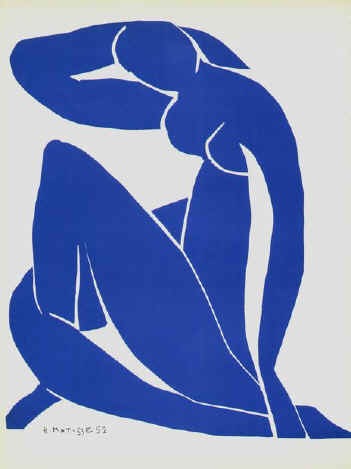 Last weekend, I started to paint again. Here is a photo of my first work: What do you think?
Last weekend, I started to paint again. Here is a photo of my first work: What do you think? Of course this is not MY work, but Le nu bleu II de Henri Matisse.
Tonight, I learned Russian! I am pretty good, don't you think?
Я использовал интернет, чтобы перевести эту фразу на русском языке
Of course I don't speak Russian. The sentence above reads "I used the internet to translate this sentence into Russian."
What's my point?
We cannot plagiarize: use someone's work as our own.
So how can students complete research with respect to the laws of copyright and plagiarism?
For example, where can they find the images for a visual presentations ?
In my observation, it used to be that most students googled for images, copied and pasted it into their presentation. However, over the past 2 years, I have seen much more awareness and education in teaching students from our school to give credit for their resources. It will take a few more years to bring everyone (students, teachers, parents) on board, but I do believe that soon it will be an expected skill.
How can a student be sure that s/he is not breaking the international rules of copyrights?
1) Students should be aware of the school's Acceptable Use Policy with respect to the copyrights' law.
2) Encourage students to use the creative commons search engine for visual or audio resources. I have created a step by step use of Creative Commons* that can be presented to students on the first day of a project to teach them how to look for powerful pictures.
*Reference

No comments:
Post a Comment